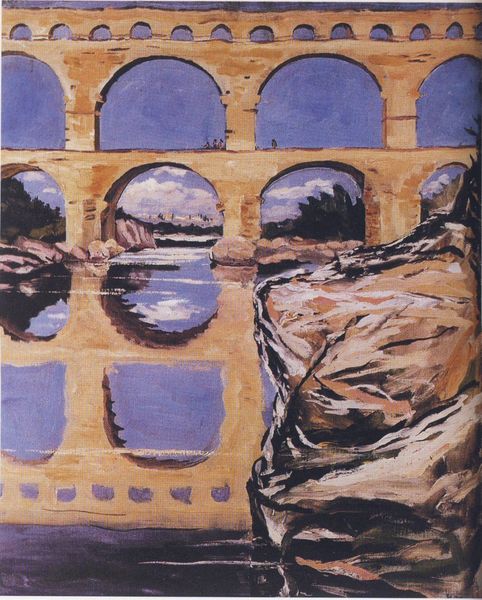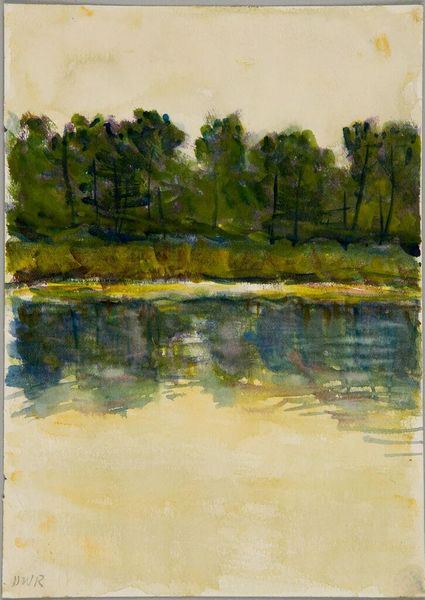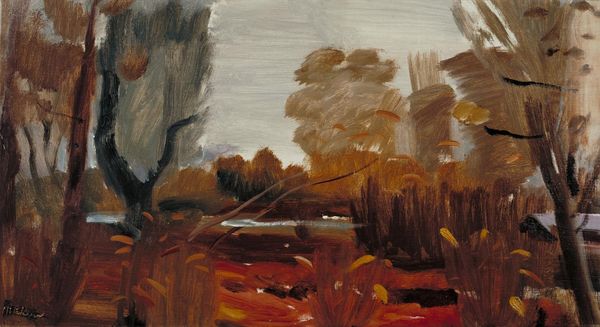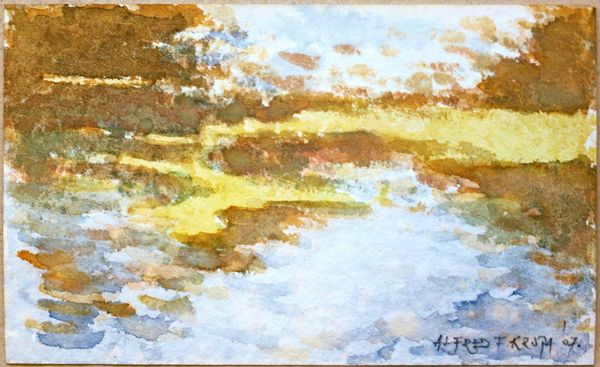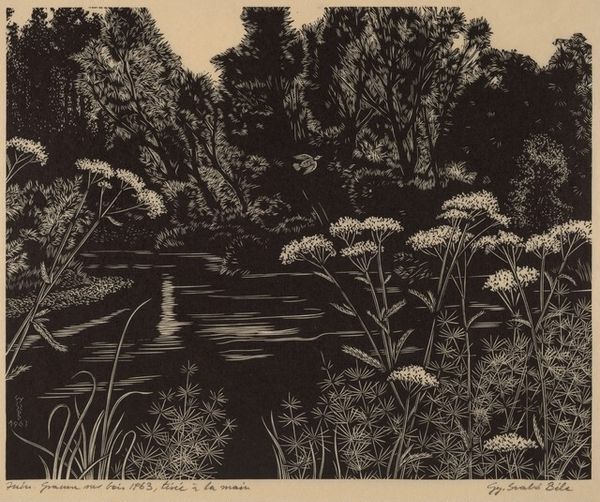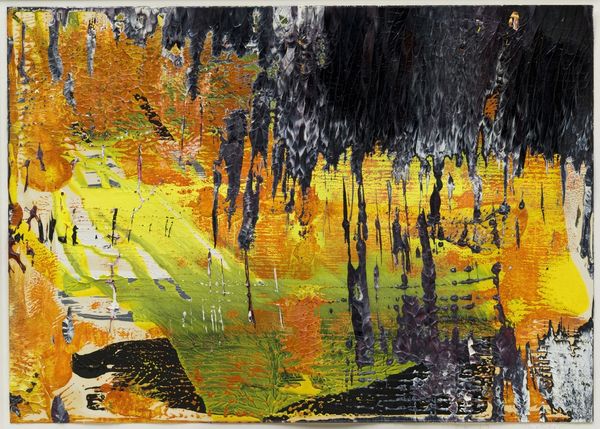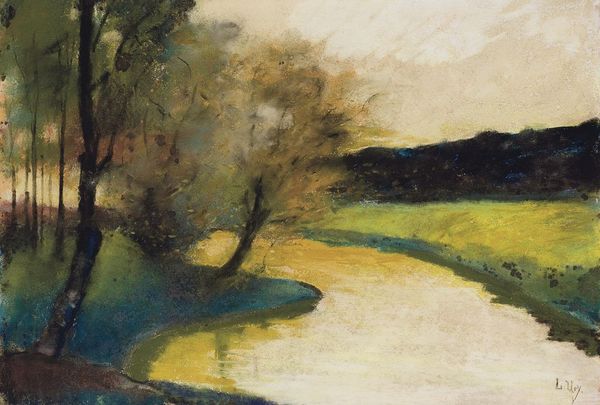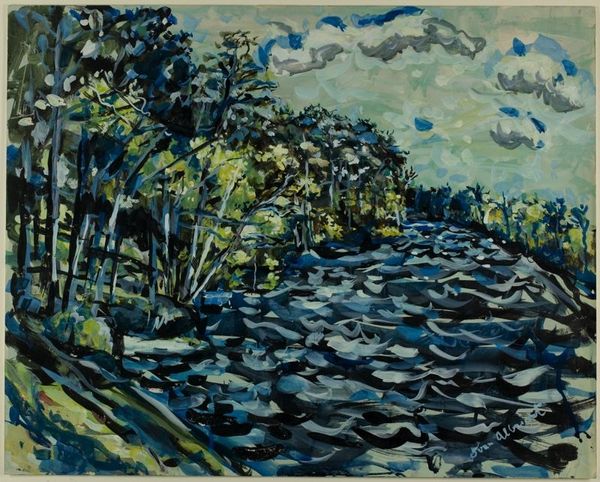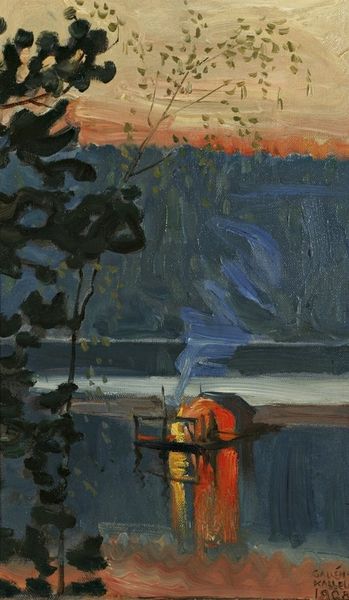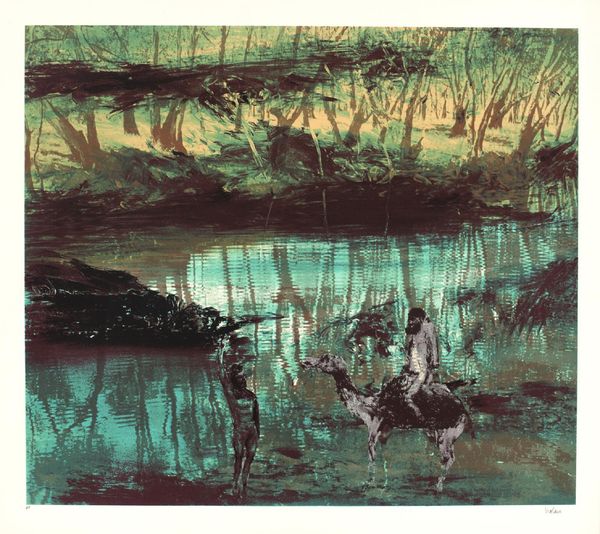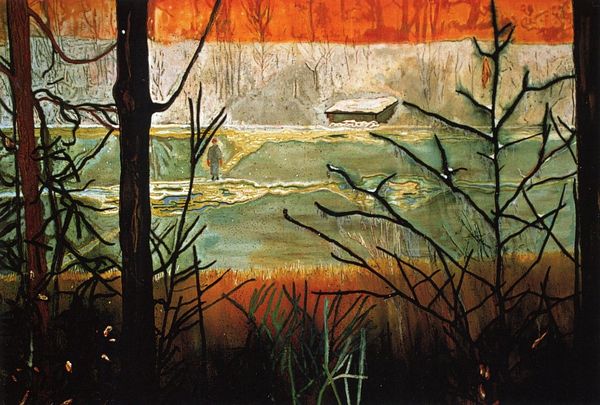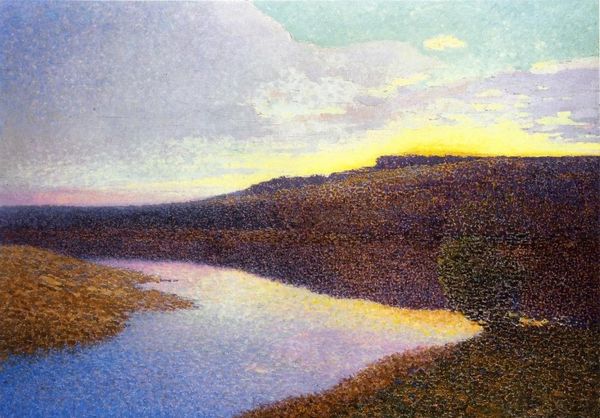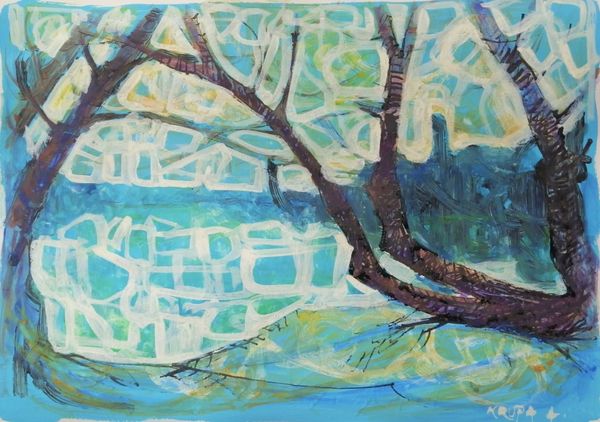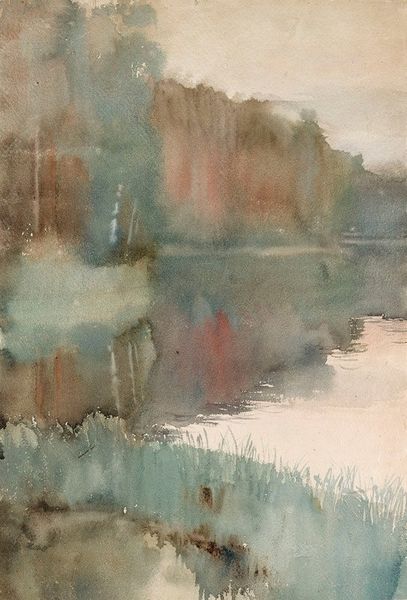
painting, plein-air, oil-paint
#
impressionist
#
painting
#
impressionism
#
plein-air
#
oil-paint
#
landscape
#
impressionist landscape
#
romanticism
#
cityscape
Copyright: Public domain
Curator: Looking at this landscape painting, I immediately feel a certain quietness. The palette is muted, the shapes soft. Editor: Indeed. This piece, titled "The Ford," attributed to John O'Connor, is a rather captivating example of a muted cityscape rendered, I think, in oil paint in plein air, that imbues it with a sense of immediacy. Notice how the subject appears within this confluence of impressionistic and romantic stylings. What symbols strike you? Curator: Well, the bridge is obviously a key element—bridges are loaded symbols. Historically they are practical structures allowing connection across divides, and here it might symbolize overcoming obstacles, reaching a destination or goal, as bridges often imply passage from one state to another. Editor: Right, the bridge physically facilitates connection. Beyond the literal functionality, consider the societal implications. Who uses this bridge? Does it connect different social classes, or serve purely practical or economic functions related to, perhaps, trade in the region? We might even want to ask how public projects impact society. Curator: I notice also how the archways repeat a symbolic "womb" shape, a space of initiation and re-birth, framing dark pools beneath. But I am wondering about the tall, vertical brushstrokes suggesting dry stalks of grass in the foreground. The plants remind me of time and endurance. Editor: Precisely. And how does that play into our modern interpretation of this natural space in an industrializing society? Were there preservation efforts? And beyond preservation, did landscape painting of that period factor into new attitudes or actions that reshaped our environmental sensibilities? Curator: This bridge seems familiar. I feel I’ve seen similar architectural designs elsewhere. In the context of the location where it was painted, I see a bridge from past times reaching to some later industrial or cultural transformation. Editor: Exactly, art becomes a cultural actor, revealing society's latent hopes and anxieties! In short, a painted narrative—where viewers of later times become, so to speak, archeologists of its visual world. Curator: It's quite fascinating how much this seemingly simple scene reveals about culture through the symbols that seem deliberately captured here! Editor: Yes, indeed. From the vantage of history, “The Ford” suggests so much about society’s ever-evolving relationship to nature, infrastructure, and, perhaps most importantly, itself.
Comments
No comments
Be the first to comment and join the conversation on the ultimate creative platform.
